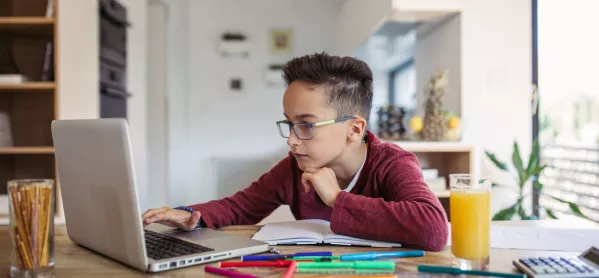Online learning is bringing all sorts of new challenges and questions, including the big one: cameras on or off?
It is a fiercely debated issue. Live lessons offer an interactive element that prerecorded ones and paper-based resources don’t.
One of the main reasons for using live lessons as part of your online curriculum is to engage students with their learning and provide a more “real” experience.
But anxiety can be a factor when it comes to live lessons and cameras. The prospect of being filmed is daunting for teachers, and students and having cameras off can significantly reduce the stress and strain on both types of participants.
In many ways, having audio fulfils the interactive factor for live lessons, so is it necessary to be able to see the students and for them to see you?
Online learning: Safeguarding questions over cameras in live lessons
The safeguarding argument is that camera off is safer in many ways. There is less chance of unwanted additional participants, and the context in which the students are learning doesn’t create any social embarrassment (such as around clothing or home environment).
The pandemic has taught us that not all students have the privilege of a quiet, comfortable learning space. Although most meeting platforms offer background blurring, the issue of a conducive working environment remains.
At school, children can choose what they share about their lives with others. Not demanding that their cameras be on gives them that extra level of privacy.
But with cameras off, we lose the ability to read expressions, as well as the personalisation of learning. It becomes harder to build and maintain those relationships that we rely on in the classroom.
There is a sense of familiarity in a lesson where the students can see the teacher and each other.
Having cameras on means that questioning can be more fluid, activities and tasks can be more interactive and, simply, the teacher can see if the students are doing that work they have been told to do.
But battling with students to switch their cameras on can detract from the learning, outweighing the advantages of having the camera on.
Keeping things in perspective
Ultimately, it is important to keep things in perspective and to make online learning as inclusive as possible. There is a huge amount of anxiety already, and consideration must be paid to the impact that additional pressure may have on learners.
What is important is that a consistent and clear approach is adopted. We need to consider the pressures on teachers as well as the pressures on students. In these difficult times, there really is no right answer.
Adam Riches is an assistant principal and senior leader for teaching and learning, specialist leader in education and head of English. He tweets @TeachMrRiches


